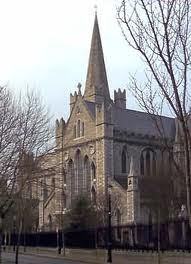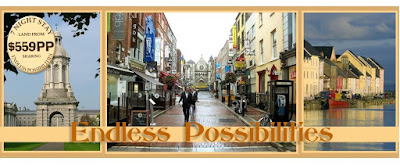Visit the beautiful, historical twin towns of Ballina and Killaloe which span the River Shannon at the southern point of Lough Derg. Steeped in history, you can explore such breath taking sites as Brian Boru’s Fort and St. Flannans Cathedral.
Killaloe, on the Clare side of the river, is made up of charming narrow streets, flanked by old shops along the steep hill looking down over the 13th century cathedral. The town was home to Brian Boru, the High King who united Ireland against the Vikings, so this picture perfect town with its Victorian streets and old canal banks was once capital of all Ireland.
Ballina on the Tipperary side, offers a newly rejuvenated tree lined Park along the riverbank on what was once a railway line, with plentiful moorings and Derg Marina catering for the leisure craft that make Killaloe/Ballina one of the best centres for water activity breaks in Ireland. You will find first-class pubs and eateries along the Main Street and old quayside.
10 Things to do in Killaloe/Ballina
St. Flannans Cathedral
The early monastery on this site at the southern end of Lough Derg was founded by St. Fachnan, and he was followed as Abbot by St. Flannan who died around 639. The Cathedral was founded about 1185 by Donal Mor O’Brien. The Cathedral incorporates some of the finest examples of Hiberno-Romanesque architecture.
St. Flannans Oratory
In the grounds of the Cathedral is St. Flannans Oratory, a 12th Century Romanesque church.
St Moluas Church
In the grounds of St Flannans Catholic Church, further up the hill, is St. Moluas oratory. It originally stood on Friars Island in the Shannon, but was removed stone by stone, and re-erected there when the island was flooded and submerged in the Shannon Hydroelectric Scheme in 1929.
Templecheally
An ancient church and the family burial ground of the O’Hickey Clan – physicians to some of the great clans of Ireland like the O’Brien’s of Thomond and the O’Kennedys of Ormond.
Tobermurragh (Murroughs Well)
Ancient lore tells us that it was here the son of Brian Boru was christened. The well is remarkable for the abundant supply of crystal water it provides – even in the driest of summers.
Beal Boru (Brian Borus Fort)
A great earthen fort of the end of a spur, giving a commanding vantage at the point where the Lough narrows to form the River Shannon once more.
Graves of the Leinster Men
To the East of Ballina lie the Arra Mountains whose highest peak Tountinna (Hill above the Wave) is 465m. It is from these mountains, which skirt the shores of Lough Derg between Ballina and Portroe, that the true majesty of the Shannon’s greatest Lake can be appreciated. The mountains contain one of the most celebrated sites of ancient Ireland – The Graves of the Leinstermen. The pre-historic bronze age chamber tomb dates from about 1000BC and is believed to have been one of the first inhabited places in Ireland. Tradition tells us that the Kings of Leinster and his men were ambushed here on the orders of Brian Borus wife Gormliath, because she feared the Leinster King was to marry her daughter. As the King lay dying he asked to be brought to a spot from where he could see his cherished Kingdom of Leinster.
Play a Round of Golf
Play a round of Golf at one of the several nearby Golf Courses. Our inhouse golf experts, at Celtic Tours can help you choose the right one!
Mollys Bar and Restaurant
Formerly an RIC police station dating back to 1829, is now renowned for its food, drinks, friendly atmosphere and lively traditional and modern music sessions.
The Lough Derg Way
The Lough Derg Way stretches from Limerick City to Killaloe, a distance of 26kms (16 miles) and from Killaloe/Ballina to Dromineer 32Kms (20 miles) along the banks of the River Shannon, the old Shannon Navigational Canal and the eastern shores of Lough Derg. The canal bank dominates a major part of the southern section of the walk from Limerick to Killaloe and the extended route to Dromineer is an uphill climb overlooking the majestic Lough Derg.
Top Off Your Trip to Killaloe with a stay at the Lakeside Hotel, Killaloe
The Lakeside Hotel is situated in a stunning location on the banks of the river Shannon proudly overlooking the twin towns of Ballina and Killaloe Co. Clare with its famous 13 arch bridge and 13th century cathedral, St. Flannans. With its innate sense of peace and warmth, it is often described by locals as “Irelands Best kept secret”.
The Lakeside Hotel is a three star hotel accommodation in Clare which has been designed for your comfort and convenience. These accommodations in Killaloe Co Clare offers 46 en-suite guest rooms with in-room amenities to ensure you have a pleasurable stay.
Relax and unwind in the Leisure Complex with the most up to date exercise equipment and first class leisure facilities. The gym at the Lakeside Hotel & Leisure Centre hosts a complete range of cardiovascular equipment, many with their own integrated entertainment systems. Or relax in the sauna or steam room – perfect to ease tired muscles, promote relaxation and alleviate strains after exercise. The Kids will love the spectacular 120ft figure-8 waterslide!
The Lakeside Hotel is a featured accommodation in Celtic Tours Deluxe Deluxe Self Drive Package.
Learn More about this great package.
























